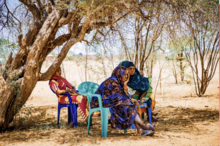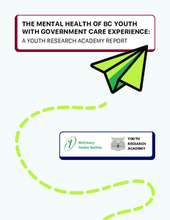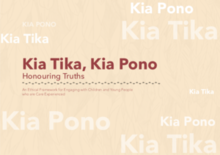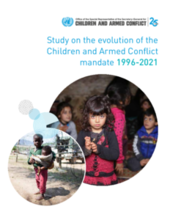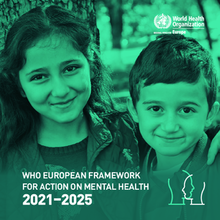Demographic Data
|
Sources: World Bank, UNDP, UNAIDS, DHS 2013 |
Displaying 2071 - 2080 of 14391
This framework was developed to guide the process of taking in vulnerable children by families, whether they are related to the specific families or not and bringing them up the same way they bring up their biological children.
This is an ethical framework to guide engagement with tamariki (children) and rangatahi (young people) who are care experienced (that is, who currently or at some stage in their lives have been in foster or residential care).
Family for Every Child Alliance members strengthened and adapted their service delivery to provide vital support in the changed circumstances. This Toolkit uses their experiences and lessons learned to guide practitioners to support children and families to prevent domestic violence from affecting children. With specific resources focused on prevention and response, a variety of practices from around the world are given here, to encourage cross-learning and exchange and to generate new learning across the alliance and beyond.
This study looks at the results achieved under the mandate of the Special Representative of the Secretary-General for Children and Armed Conflict (SRSG CAAC) in the past 25 years, the challenges that impacted its implementation and the opportunities to improve the protection of children affected by conflict.
This paper examines the nature and benefits of foster care and identifies some of the key challenges associated with this form of care in Eastern and Southern Africa. It outlines the elements of an enabling environment needed for successful large-scale foster care programmes, including legislation, guidance, changes to social norms, coordination mechanisms, and a strong social service workforce. The paper also provides lessons learnt from the region on how to support each stage of the foster care process.
The WHO European Framework for Action on Mental Health (EFAMH), covering the period 2021–2025, sets out a response to current mental health challenges arising from the negative impact that the COVID-19 pandemic has had on population mental health and well-being. The EFAMH provides a coherent basis for intensified efforts to mainstream, promote and safeguard mental well-being as an integral element of COVID-19 response and recovery; to counter the stigma and discrimination associated with mental health conditions; and to advocate for and promote investment in accessible quality mental health services. Implementation and monitoring of this Framework for Action will be powered by the Pan-European Mental Health Coalition, a flagship initiative of the European Programme of Work 2020–2025. Draft of this document was tabled as a background document for the discussion on mental health during the 71st session of the Regional Committee for Europe, Virtual session, 13–15 September 2021.
Since the start of war in Ukraine, more than 4 million people have fled, half of whom are children. As of today there is the Mylifejourneybook for these children: an activity book in which children can write their experiences of the journey, but also their memories of Ukraine and their hopes for the future. The book can be downloaded free of charge for everyone at www.lifebookforyouth.com/mylifejourneybook
The Toolkit is intended for field practitioners working with Children Associated with Armed Forces and Armed Groups (CAAFAG), who are interested in designing and implementing quality, gender-sensitive and participatory programming.
This study combines a quantitative overview of the leading indicators of well-being among children and young people in cities, with a qualitative, in-depth understanding of how daily life is perceived and experienced by the urban young. The quantitative analysis has predominantly employed existing national data sets, such as The National Socioeconomic Survey (SUSENAS) and the Indonesia Demographic and Health Survey (IDHS), to understand the situation of children in urban settings. The secondary analysis assessed approximately 20 indicators that are based on the SDG/Sustainable Development Goal themes, and that align with the Indonesian National Medium Term Development Plan 2020–2024. The combination of secondary analysis, a systematic literature review, and consultations with children and young people generated insights on the constraints and opportunities faced by them and their broader urban communities.

